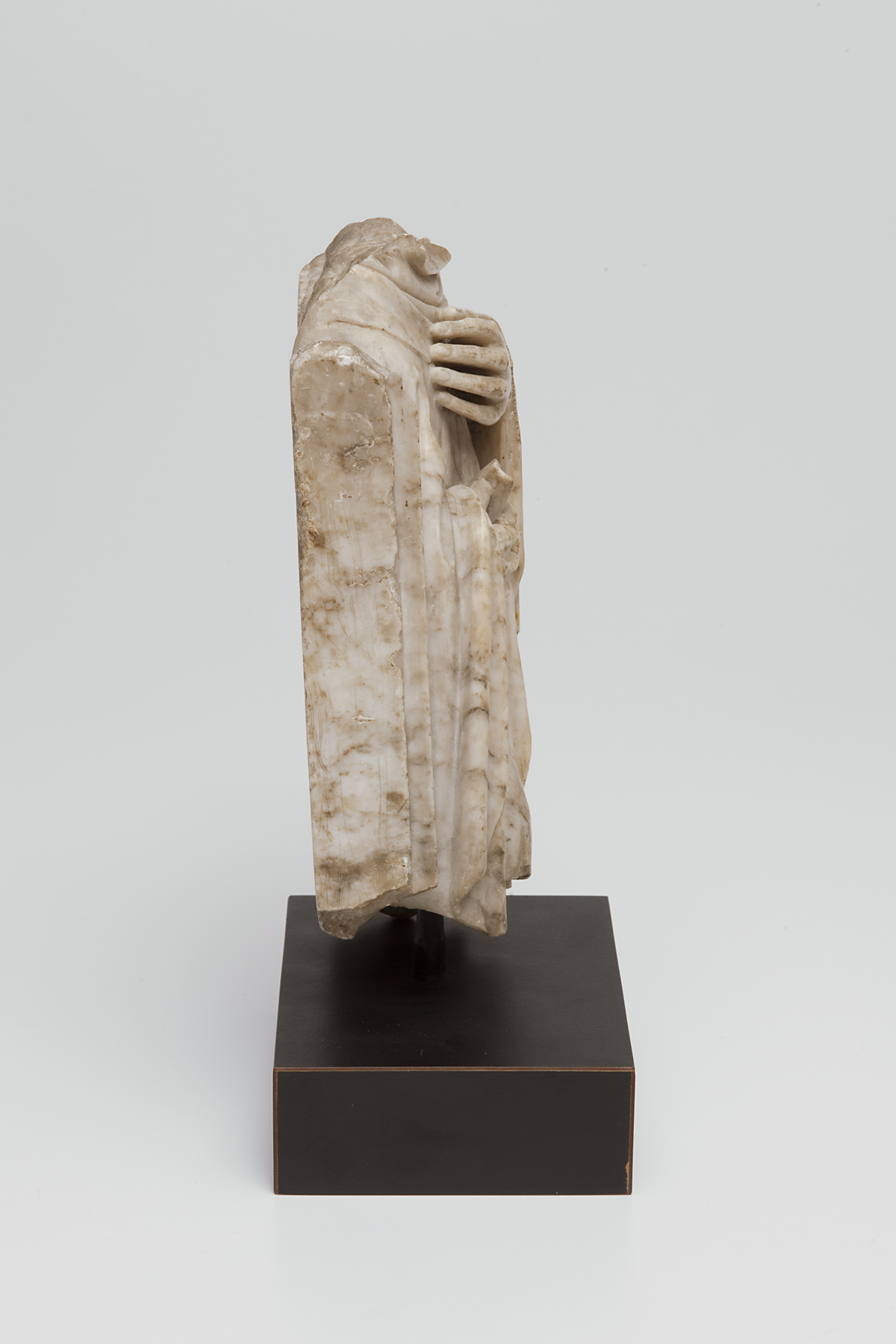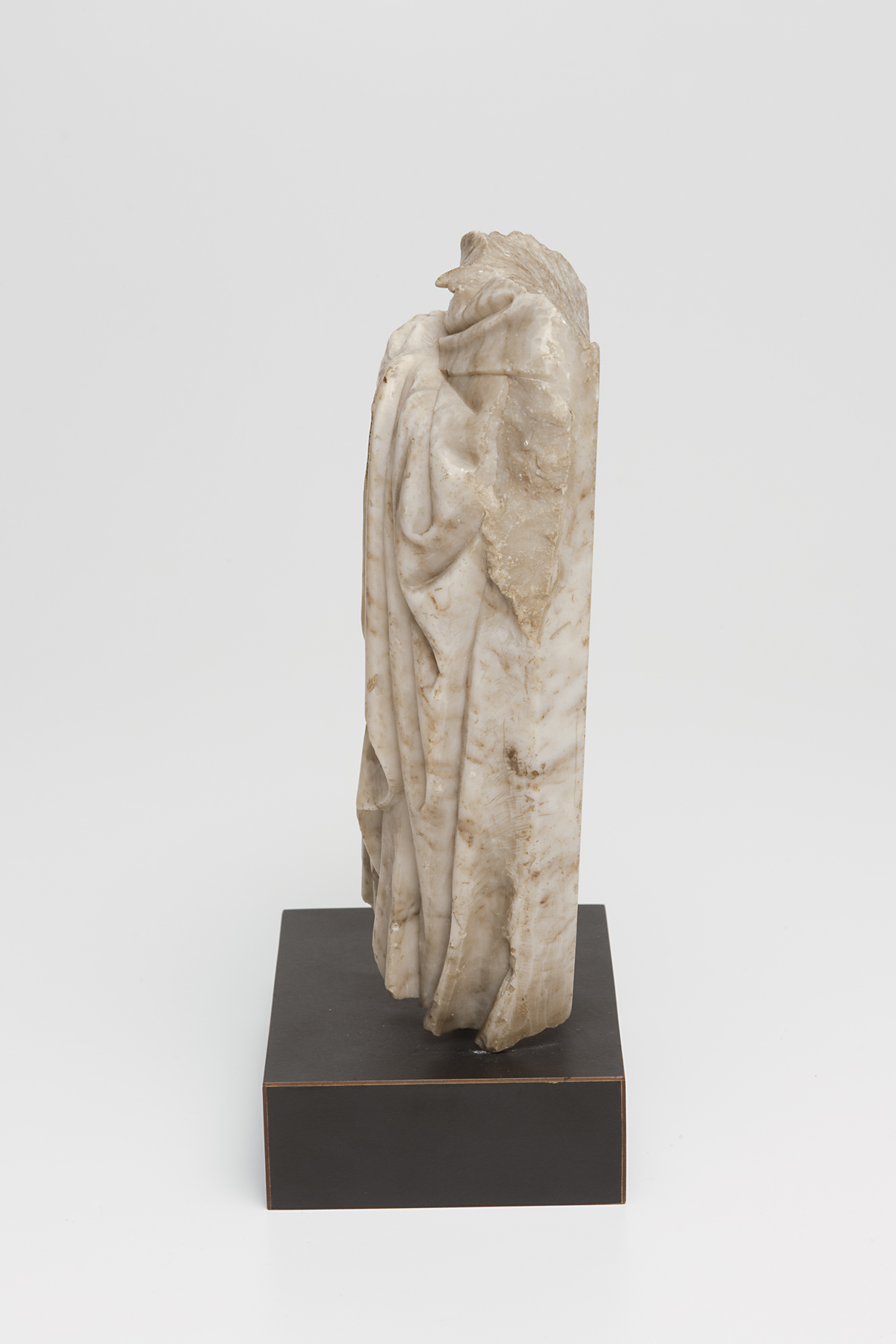pleurant (mourner) from the tomb of the King of Aragon 1417, Pere Oller
Artwork Overview
Pere Oller, artist
active 1394–1456
pleurant (mourner) from the tomb of the King of Aragon 1417,
early 1400s
Where object was made: Catalonia, Crown of Aragaon (present-day Spain)
Material/technique: alabaster
Dimensions:
Object Height/Width/Depth (Height x Width x Depth): 23.5 x 14.9 x 6.5 cm
Object Height/Width/Depth (Height x Width x Depth): 9 1/4 x 5 7/8 x 2 9/16 in
Object Height/Width/Depth (Height x Width x Depth): 23.5 x 14.9 x 6.5 cm
Object Height/Width/Depth (Height x Width x Depth): 9 1/4 x 5 7/8 x 2 9/16 in
Credit line: Gift of Leopold Blumka
Accession number: 1957.0113
Not on display
If you wish to reproduce this image, please submit an image request




